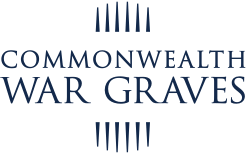22 September 2025
From Volunteers to Forensic Archaeologists: The Evolution of the CWGC Recovery Unit and the Burial of Eight Scottish Soldiers at Loos BCE
Stephan Naji, Head of the CWGC Recovery Unit, guides us through how, even a century after the Battle of Loos, our work never ends.
Recovering the dead of the Battle of Loos
Eight soldiers of the Battle of Loos

Image: Michiel Vanmarcke, Recovery Unit Ceremony Coordinator, with Scottish soldiers at a rededication service (© Eric Compernol)
On 25 September 1915, the opening day of the Battle of Loos, the 15th Scottish Division surged forward into German positions near Loos-en-Gohelle.
Amid the chaos of trench warfare and relentless artillery fire, hundreds of soldiers fell. Many were sadly never recovered, their final resting places lost to time.
Over a century later, eight of these Scottish soldiers were found and will be laid to rest with full military honours, thanks to our work at the Commonwealth War Graves Commission.
Their story is not only one of remembrance but also a testament to the evolution of battlefield recovery, from volunteer efforts to a professional forensic archaeology team.
The Battle of Loos was one of the largest British offensives of 1915. On its opening day, the 15th Scottish Division advanced rapidly, breaching German lines and pushing through Loos village and up Hill 70.
The 44th Brigade, including the 9th Black Watch, 8th Seaforth Highlanders, 10th Gordon Highlanders, and 7th Cameron Highlanders, fought fiercely in the ruins of Loos and the Dynamitière Salient.
By 11:00 am, the remnants of the brigade had been forced to retreat under heavy fire, settling into defensive positions below the crest of Hill 70.
By the end of the day, the brigade had suffered heavy casualties, including many of its officers, a fate shared by many of the Commonwealth units engaged at Loos.
When the battle ground to halt in early October 1915, the British had lost over 59,000 men.
The Loos Memorial at Dud Corner Cemetery commemorates around 20,000 casualties with no known graves from this battle.
The Discovery: Loos-en-Gohelle, 2019–2021

Image: The Recovery Unit involves lots of hands-on work
Due to the scale of the combat on the Western Front, lost servicemen of the First World War are still being discovered in northern France and southern Belgium.
Often, large-scale infrastructure and construction projects on former battlefields will reveal casualties previously thought missing. This allows us the opportunity to recover, study, and potentially identify these people and commemorate them appropriately.
Between 2018 and 2021, construction and demining operations around the Lens Hospital site in Loos-en-Gohelle unearthed the remains of over 120 sets of Commonwealth human remains.
Amongst them, three separate CWGC recoveries between 2019 and 2021 revealed the remains and associated artefacts for the eight Scottish casualties that will be buried on the anniversary of the Battle of Loos.
The long investigation led to the identification of two soldiers:
- Lieutenant James Grant Allan of the 9th Gordon Highlanders
- Lance Corporal Gordon McPherson of the 7th Cameron Highlanders
The remaining six, though unidentified, were confirmed to be Scottish soldiers from various regiments, including the Highland Light Infantry and Gordon Highlanders.
Their final resting place was chosen to be the Loos British Cemetery Extension, close to where they fell. Their discovery, more than a century later, underscores the enduring legacy of the war and the importance of continued recovery efforts.
Coincidentally, one of these recoveries was also my first one after I joined the Commission as Head of the Recovery Unit in 2021.
The Evolution of the Recovery Unit
Origins: Volunteers and Grave Registration
Our origins begin in 1917 with the founding of the Imperial War Graves Commission by Royal Charter.
Initially, grave registration was carried out by volunteers and military personnel, often under harrowing conditions. These early efforts focused on marking graves, recording names, and responding to enquiries from grieving families.
After the Second World War, volunteer recovery efforts continued, often led by individuals with personal connections to the original Grave Registration Units.
Discoveries were typically incidental, found during farming, construction, or archaeological digs, and identification relied heavily on personal markers like ID discs or inscribed artefacts with regimental number or initials.
A New Era: Forensic Archaeology and Multidisciplinary Approaches
The turn of the 21st century marked a turning point for what is known today as the “archaeology of conflict”.
Several factors contributed to a renewed interest in identifying military casualties:
- Structured salvage archaeology in France and Belgium improved monitoring of First and Second World War discoveries
- Scientific recognition of the World Wars as archaeological themes elevated investigative standards
- Advances in DNA technology enabled more reliable identification
- Online genealogy databases provided new avenues for tracing descendants
These developments led to the creation of modern national identification programmes, such as Canada’s Casualty Identification Program in 2007, the UK’s MOD War Detectives in 2015, and Australia’s Unrecovered War Casualties – Army in 2010.
Professionalisation of the CWGC Recovery Unit
In France, where over 100,000 Commonwealth casualties remain missing, we responded by professionalising our Recovery Unit.
The discovery of the Fromelles mass grave in 2010 catalysed the development of a new protocol and motivated our horticultural staff to proactively monitor and manage recoveries.
After the initial efforts to set up a modern Recovery Unit (RU) from the France Area Horticultural manager, Steve Arnold and horticulture supervisors, such as Paul Bird and Julian Blake, the Head of Recovery Unit position was created in 2021 to upgrade the protocols and develop the RU operations.
Today, the RU consists of three full-time forensic archaeologists and one ceremony coordinator specialised in military history.
The RU is assisted by a support team trained in recovery protocols with dedicated equipment, including a 3-ton mechanical digger.
This structure has enabled the RU to recover over 400 sets of remains in France and Belgium between 2021 and 2025.
This is a fantastic achievement, but as tens of thousands of servicemen still lie unrecovered beneath the battlefields of the Western Front, our work continues.
Evolution not revolution: Forensic Archaeology in Action

Image: New technologies and processes have greatly aided our Recovery Unit
The new Recovery Unit’s approach is now framed by forensic archaeology methods, emphasising context, association, and documentation.
This pivotal change created the necessary framework to position the RU as experts in military contexts with law enforcement, public prosecutors, and heritage agencies.
By positioning us as leaders in our field, we take on the responsibility of being the first responders in a potential crime scene when skeletal remains are discovered. Incidents like these happen almost once or twice a year, when the context of a discovery cannot be proven to be military or historical.
This is why part of the team’s process includes confirming human origin, determining historical, military, or forensic relevance, and defining the minimum number of casualties.
Excavation follows forensic archaeology principles, producing detailed 2D and 3D maps of each skeleton and artefact, ensuring accurate association of items with individuals, central for identification and ethical processes.
Biological and Social Profiling

Post-recovery, remains are analysed in our specialised anthropology lab in Beaurains, based on the principles of biological and social profiling.
Biological profiling covers aspects that could help with physical identification, such as age, sex and height. It also looks at any potential trauma, such as shrapnel or shell wounds, or further observations that may be relevant to the investigation.
Social profiling focuses instead on dating artefacts and personal items that can help identify a casualty. This includes regimental numbers or insignia from items like shoulder titles or cap badges.
Artefacts like boots can also prove useful identifiers. A boot stamped with its date of manufacturing can help us place casualties to specific years and phases of the war, for instance.
Elsewhere, personal items such as spoons and cutlery engraved with regimental insignia may link remains to specific individuals.
In some cases, artefacts are restored using ultrasound chemical bath and micro-sanding to best reveal the most minute inscription.
Contextualising the recovery
Once the RU report is completed, our Commemorations Team’s dedicated researchers will contextualise the recovery.
They do this by looking at trench maps, war diaries, the Commission’s archives and any relevant resources to understand the circumstances that led this particular casualty to be missing in action.
The objective is to confirm the nationality and draft a list of potential victims reported. Even when identification is not possible, all recovered soldiers are buried with full military honours, reaffirming our commitment to remembrance.
A Mission of Remembrance and Respect
The recovery and burial of eight Scottish soldiers at Loos British Cemetery Extension is more than a historical footnote: it is a symbol of the CWGC Recovery Unit’s evolution and enduring mission.
From volunteer efforts to professional forensic archaeology, the Recovery Unit embodies a commitment to honouring the fallen, preserving history, and advancing the science of remembrance.
As construction and development continue across former battlefields, the RU stands ready to respond, recover, and remember.
Each discovery is a step closer to giving a name to the unknown, a story to the forgotten, and peace to those who still wait.
Our thanks go to the Recovery Unit, including:
- Stephan NAJI – Head of the Recovery Unit
- Lorelei MARGELY-LARDEYRET – anthropologist
- Isaure DUCOUSSO – anthropologist
- Michiel VANMARCKE – Ceremony coordinator

